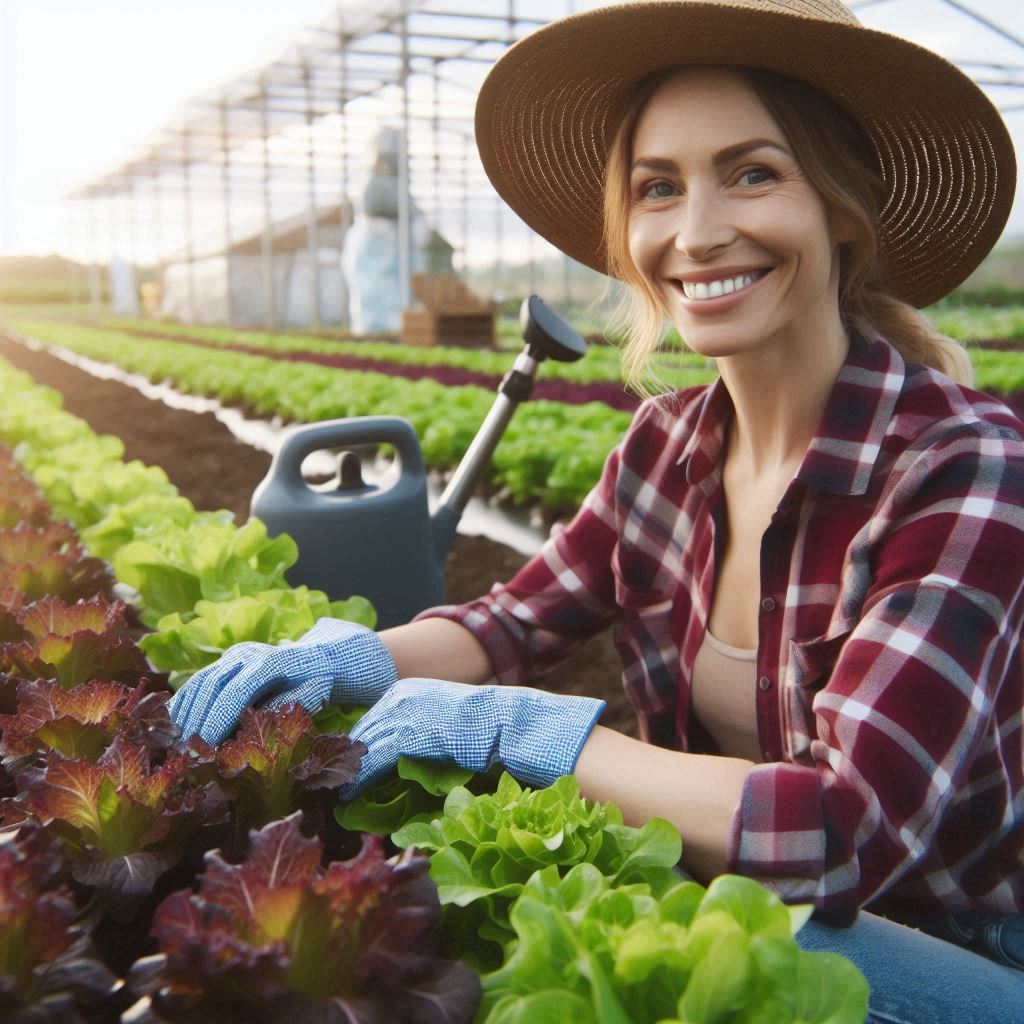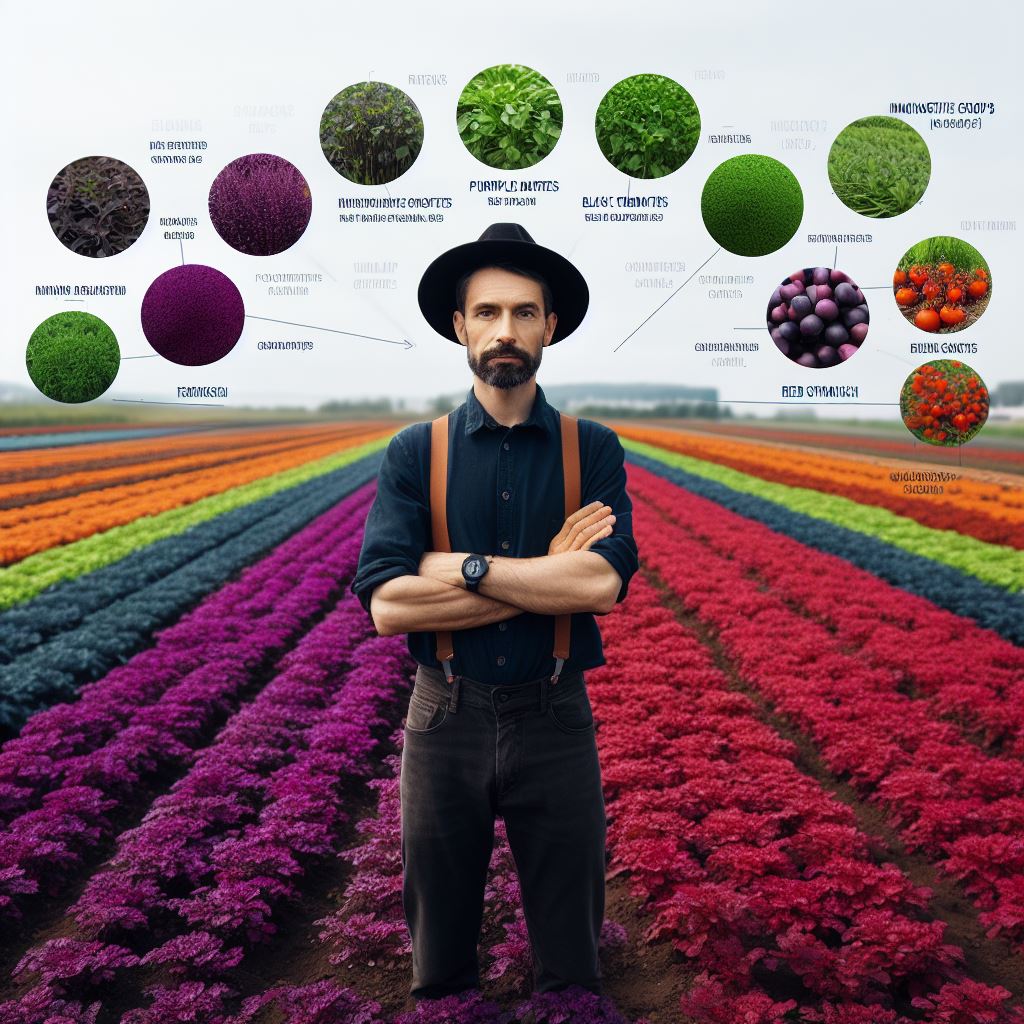Introduction
Microclimates refer to localized climate variations posing a hidden microclimates unseen threat.
These variations can arise from topography, vegetation, and human activity.
Farmers often encounter microclimates in their fields, which can have profound effects on crop production.
Understanding microclimates is crucial for effective agricultural management.
These small-scale climate patterns significantly influence crop yields, pest populations, and water availability.
By tailoring farming practices to these unique conditions, farmers can optimize their output.
Influence on Crop Yields
Microclimates can create distinct growing conditions within a single field.
For instance, areas with shade from trees may remain cooler, affecting how crops grow.
Conversely, spots with direct sunlight may experience increased warmth, promoting faster ripening.
Farmers who recognize these differences can choose suitable crop varieties for specific microclimates.
They can plant heat-tolerant crops in warmer areas and shade-loving plants where conditions are cooler.
This strategy maximizes overall yields.
Pest Control
Pest populations often thrive in certain climatic conditions that microclimates can provide.
For example, areas with higher humidity may attract specific insects.
Understanding these patterns allows farmers to implement targeted pest management strategies.
Farmers can adopt integrated pest management techniques specific to microclimate conditions.
They can introduce beneficial insects in areas affected by pests or adjust planting times to outpace infestations.
This approach reduces pesticide reliance, promoting more sustainable farming.
Water Management
Different microclimates affect soil moisture and water retention in various ways.
Areas that receive more shade may retain moisture longer, while sun-drenched spots may dry out rapidly.
Farmers must adapt their irrigation practices based on these variations.
By identifying microclimates, farmers can implement more efficient watering strategies.
For instance, they may apply drip irrigation in dry areas while conserving water in shaded regions.
This tailored approach improves water usage and optimizes crop health.
What Are Microclimates?
Microclimates refer to localized atmospheric zones where the climate differs from the surrounding area.
They create unique environments suitable for specific crops.
Understanding microclimates helps farmers optimize their practices and maximize yields.
Characteristics of Microclimates
Several characteristics define microclimates.
They can vary dramatically even over short distances.
Here are some key features:
- Temperature Variations: Microclimates can be warmer or cooler than the surrounding area.
- Humidity Levels: They may have varying humidity, affecting plant growth and disease prevalence.
- Wind Patterns: Local geography influences wind speeds and directions in microclimates.
- Soil Moisture: Soil can retain more moisture or drain faster in specific locations.
- Sun Exposure: The orientation of the land affects how much sunlight an area receives.
How Microclimates Differ from Broader Climate Trends
Microclimates differ significantly from broader climate trends.
Climate trends assess larger areas, while microclimates focus on small, specific regions.
Here’s how they diverge:
- Scale: Broader climate trends look at regional or global averages, unlike localized microclimates.
- Data Collection: Microclimates involve highly localized data, while broader trends rely on widespread environmental data.
- Short-Term Changes: Microclimates can change quickly due to factors like land use or local weather.
- Diversity: A region may have uniform climate trends but numerous unique microclimates.
- Impacts on Agriculture: Microclimates directly influence farming practices, while broader trends set general guidelines.
Factors Influencing Microclimates
Multiple factors contribute to the formation of microclimates.
Understanding these influences enables farmers to adapt their strategies.
Below are the primary factors shaping microclimates:
Topography
The physical landscape significantly affects microclimates.
Different elevations, slopes, and valleys create varying climatic conditions.
Key points include:
- Elevation: Higher elevations can be cooler and wetter than nearby lowlands.
- Slope Orientation: South-facing slopes often receive more sunlight, creating warmer microclimates.
- Valley Effects: Valleys can trap cold air, resulting in colder temperatures at night.
Vegetation
The presence of plants also alters microclimates.
Vegetation influences sunlight exposure, wind flow, and moisture retention.
Important aspects include:
- Canopy Cover: Dense tree cover can provide shade, reducing ground temperatures.
- Transpiration: Plants release moisture, increasing humidity levels in their vicinity.
- Ground Cover: Various plants can impact soil temperature and moisture levels.
Human Activity
Humans play a significant role in modifying microclimates.
Urban development and farming practices can directly affect localized climates.
Consider these examples:
Transform Your Agribusiness
Unlock your farm's potential with expert advice tailored to your needs. Get actionable steps that drive real results.
Get Started- Urban Heat Islands: Cities often experience higher temperatures due to concrete and asphalt structures.
- Irrigation Practices: Introducing water can create localized humidity and temperature alterations.
- Land Use Changes: Deforestation or vegetation removal can expose the soil and alter climatic conditions.
Man-Made Structures
Buildings and other structures contribute to microclimate formation.
Their designs and materials can trap heat and modify temperatures.
Key considerations include:
- Reflection and Absorption: Materials like glass can reflect sunlight or absorb heat.
- Windbreaks: Structures can block or redirect wind, affecting local breezes and temperatures.
- Heat Retention: Certain materials retain heat longer, influencing nighttime cooling.
Implications for Agriculture
Farmers must recognize how microclimates impact their operations.
Microclimate awareness leads to better decision-making and improved agricultural practices.
Crop Selection
Farmers can choose crops better suited to local microclimates.
Selecting plant varieties that thrive in specific conditions enhances yield.
Here are considerations to increase successful crop production:
- Temperature Tolerance: Select crops that can withstand localized temperature variations.
- Water Needs: Evaluate microclimate moisture levels to choose appropriate irrigation needs.
- Sun Requirements: Factor in shade and light when selecting plants for shaded or sunny areas.
Microclimate Monitoring
Investing in microclimate monitoring technologies allows farmers to make data-driven decisions.
Understanding localized climatic shifts can enhance productivity.
Some useful practices include:
- Weather Stations: Installing local weather stations provides real-time data on conditions.
- Soil Sensors: Monitoring soil moisture can help with irrigation scheduling.
- Remote Sensing: Utilizing drone technology for mapping microclimates improves crop management.
Therefore, recognizing the concept of microclimates is essential for modern farming.
These localized climates significantly impact how crops grow and how farmers manage their resources.
By understanding microclimates, farmers can enhance productivity and sustainability in increasingly variable climate conditions.
The Impact of Microclimates on Crop Production
Microclimates are small areas where unique climate conditions exist.
These areas can significantly impact agriculture.
Understanding these variations benefits farmers, enhances crop yields, and promotes sustainable practices.
Let’s explore the effects of microclimates on crop production through temperature and moisture levels.
Variability in Temperature and Moisture Levels
Temperature and moisture control plant growth stages.
Variability in these factors influences germination, flowering, and fruit set.
Farmers must understand how microclimates affect these stages.
- Germination: Factors like temperature greatly influence seed germination rates.
Ideal temperatures stimulate quick germination.
Conversely, excessive cold or heat can hinder this process.
In microclimates, slight temperature changes can accelerate or delay germination. - Flowering: Temperature affects the timing of flowering.
Warmer microclimates can lead to earlier flowering.
This early burst can allow for additional harvests in a growing season.
However, excessive heat can lead to flower drop and reduced yield. - Fruit Set: Consistent moisture levels enhance fruit set.
Microclimates can provide favorable conditions for fruit development.
Insufficient moisture, however, can lead to small fruit sizes and low yields.
Understanding the balance in microclimates can optimize fruit production.
Farmers need to monitor these variables closely.
Effective strategies can mitigate negative effects and maximize positive influences.
Utilizing data and technology plays a critical role in understanding these local conditions.
Examples of Crops Affected
Some crops thrive particularly well in microclimates.
They benefit from slight variations in climate conditions.
Here are several examples:
- Tomatoes: These tender plants often thrive in warmer microclimates.
Farmers can plant tomatoes earlier in warmer areas.
A longer growing season maximizes yield potential. - Peppers: Like tomatoes, peppers benefit from higher temperatures.
A microclimate that retains heat can produce larger, tastier peppers.
They are sensitive to cold snaps, so protected microclimates help in avoiding frost damage. - Herbs: Many herbs, like basil and rosemary, flourish in warmer and drier conditions.
Microclimates that enhance sunlight penetration promote herb growth.
Farmers can adjust planting times to align with optimal microclimate conditions. - Grapes: Wine grapes often require specific climate conditions.
Cool, coastal microclimates produce unique flavor profiles.
Farmers adjust irrigation techniques based on local moisture levels to optimize grape quality. - Leafy Greens: Plants such as kale and lettuce prefer cooler conditions.
Farmers can take advantage of shaded microclimates to grow these crops during hotter months.
This practice prolongs the growing season and enhances quality.
Farmers leverage these conditions in various ways.
By adjusting planting times and employing protective strategies, they optimize their yields.
It’s essential for them to remain observant and proactive.
Adapting Farming Practices
To maximize the benefits of microclimates, farmers can adapt several practices.
These adjustments improve resilience and productivity in changing climates.
Here are key strategies for adaptation:
- Soil Management: Since microclimates can alter soil moisture levels, farmers should monitor soil conditions.
Utilizing mulch retains moisture and regulates temperature. - Crop Rotation: Using varied crops in specific microclimates helps maintain soil health.
Crop rotation minimizes pests and diseases while optimizing the nutrient profile in the soil. - Micro Irrigation: Employing technology to manage water use is crucial.
Drip irrigation systems deliver water directly to roots.
This method conserves moisture and enhances plant growth in drier microclimates. - Plant Selection: Farmers should choose crops tailored to their local microclimates.
This selection process includes selecting drought-resistant varieties in arid zones and vice versa. - Shade Structures: Implementing shade cloths or protective structures can safeguard crops from extreme heat.
These structures create favorable conditions for sensitive plants, improving yields.
By adopting these practices, farmers adapt to the specific challenges posed by microclimates.
Awareness and responsiveness can lead to greater efficiency and reduced risk of loss.
Microclimates significantly impact crop production.
Variability in temperature and moisture levels affects essential growth stages.
Certain crops thrive under specific microclimate conditions.
Understanding these influences leads to better decision-making in farming practices.
Farmers need a proactive approach to adapt their methods.
By tailoring practices based on local microclimates, they can enhance yields and bolster sustainability.
Embracing these challenges will foster resilience in an ever-evolving agricultural landscape.
Transform Your Agribusiness Online Presence
Stand out with compelling content tailored to engage your audience and drive results. From blog posts to social media, we’ll create what your business needs to grow.
Get StartedIn fact, recognizing and utilizing the benefits of microclimates can redefine farming methodologies.
Enhanced awareness allows farmers to cultivate with greater precision.
Sustainable agriculture depends on understanding these unseen threats and opportunities.
Read: The Surprising Effects of Rising Temperatures on Wheat Production
Pest and Disease Management in Microclimates
Microclimates significantly influence pest populations and disease outbreaks.
They create localized environmental conditions that can alter the life cycles of pests.
Temperature and humidity are two critical factors that contribute to these changes.
A slight variation in these elements can enhance or inhibit pest development.
For example, warmer temperatures can speed up the life cycle of certain insects, allowing them to reproduce more quickly.
How Microclimates Affect Pest Populations
Different areas within a farm can experience varying temperatures and humidity levels.
These microclimates can affect the behaviors and populations of pests.
Some of the primary ways microclimates impact pests include:
- Temperature Variance: Warmer areas on a farm may allow pests to thrive.
Larval stages may develop faster in these zones.
Conversely, cooler areas can slow down their growth. - Humidity Levels: High humidity can facilitate the development of fungal diseases.
Many pests prefer moist conditions, which can lead to larger infestations. - Localized Wind Patterns: Wind can carry pests from one area to another, affecting pest distribution.
Some pests, like aphids, benefit from wind currents to spread to new plants. - Shelter from Elements: Microclimates create sheltered spots undisturbed by harsh weather.
Pests take refuge in these areas, allowing populations to increase.
These accumulated effects create a complex pest dynamic within microclimates.
Farmers need to understand these dynamics to protect their crops better.
Strategies for Managing Pests
Adapting Integrated Pest Management (IPM) practices for localized conditions becomes essential in managing pests effectively.
IPM seeks to control pest populations while minimizing risks to humans and the environment.
Here are some strategies for effective pest management:
- Regular Monitoring: Farmers should regularly monitor pest populations in different microclimates.
Utilizing traps and visual inspections help detect early infestations. - Localized Treatments: Apply pesticides in a targeted manner based on microclimate needs.
This approach reduces chemical use and mitigates pest resistance. - Diversity in Cropping Systems: Planting a variety of crops can deter pests.
Diverse plants create habitats that attract beneficial predators to keep pest populations in check. - Precision Agriculture: Leverage technology to gather data on microclimatic conditions.
Using drones and sensors can help farmers apply interventions more effectively. - Trapped Beneficial Insects: Encourage beneficial insects like ladybugs.
These natural predators can help control pest populations in localized areas. - Soil Management: Maintaining healthy soil can aid plant vigor.
Stronger plants are less susceptible to pest damage and disease, enhancing overall resilience.
By adjusting strategies according to the unique conditions of microclimates, farmers can substantially improve pest management.
Understanding Pest Behavior in Microclimates
Understanding how pests behave in specific microclimates is crucial for effective management.
Some pests may prefer warmer or cooler microclimates based on their physiological traits.
Knowledge of these preferences helps in developing more effective control methods.
For instance, if a farmer discovers that aphids thrive in a particular warm spot, they can target that area for intervention.
Farmers should document pest behaviors throughout different seasons.
This ongoing research will provide insights into pest movement and reproduction cycles in response to microclimate changes.
Such documentation can enhance future preparedness for pest outbreaks.
Implementing Cultural Practices
Cultural practices can significantly reduce pest populations in specific microclimates.
Several effective cultural strategies include:
- Crop Rotation: Practice crop rotation to disrupt pest life cycles.
Switching crops can reduce the likelihood of pests establishing in a microclimate. - Canopy Management: Manage plant canopies to optimize sunlight exposure and ventilation.
This reduces humidity around crops, making the environment less favorable for pests. - Mulching: Apply organic or synthetic mulches to suppress weeds.
Weeds can host pests that migrate to crops, increasing infestations. - Cover Cropping: Utilize cover crops to enhance soil health and biodiversity.
This practice can provide habitat for beneficial organisms that prey on pests.
Each of these cultural practices contributes to a healthier farming ecosystem.
Farmers who actively employ them can find greater success in managing pest populations.
Dealing with Disease Outbreaks
Pests often carry diseases that can wreak havoc on crops.
Microclimates play a significant role in the spread of these diseases.
Higher humidity levels can promote the growth of pathogens.
Farmers must prioritize disease management together with pest control.
Early detection measures include:
- Regular Field Inspections: Inspect plants frequently for signs of disease.
Early detection allows for faster action and remediation. - Plant Health Monitoring: Assess the overall health of plants.
Weak or stressed plants are more susceptible to disease. - Using Disease-Resistant Varieties: Select crop varieties known to resist specific diseases.
This choice minimizes the risk of outbreaks. - Sanitation Practices: Maintain cleanliness in the field and tools.
Regularly remove debris that can harbor pests and diseases.
By implementing a comprehensive strategy for pest and disease management, farmers can significantly minimize losses in microclimates.
The interaction of localized conditions with pest populations offers both challenges and opportunities.
Successful farmers demonstrate adaptability and proactive management in the face of these unseen threats.
Read: How Climate Change Is Affecting Your Food Supply
Unlock Farming Insights for Growth
Make smarter farming decisions with detailed reports on market trends, weather patterns, and soil health tailored to your farm's success. Boost productivity with actionable data.
Get Report
Water Management and Irrigation Practices
Impact of Microclimates on Water Needs
Microclimates greatly influence water availability for crops.
Variations in temperature, humidity, and sunlight can all affect how much water plants need.
These factors also impact precipitation patterns and evaporation rates.
Understanding these elements is essential for effective agricultural practices.
Microclimates can exist within just a few feet of each other.
For example, a shaded area may retain moisture longer than an exposed one.
Additionally, the distance to large bodies of water can alter local climate conditions.
This creates distinct zones within a single farm.
Farmers must consider how microclimates interact with weather patterns.
Some areas may receive more rainfall, while others remain dry even within the same region.
This inconsistency challenges traditional farming methods.
Consequently, farmers face two primary issues: adapting to variation in water availability and managing irrigation effectively.
Based on microclimatic conditions, crops have different water needs.
Some plants thrive in moist environments, while others prefer drier conditions.
Therefore, farmers must tailor their irrigation plans accordingly.
Identifying these roles impacts not only yields but also sustainability.
Microclimates also affect evaporation rates, influencing irrigation schedules.
For instance, wind speeds and humidity can vary significantly across a farm.
Higher wind levels increase evaporation, requiring more frequent irrigation.
Farmers must consider these factors when deciding their watering approaches.
In sum, microclimates necessitate unique water management strategies.
More than just altering schedules, farmers should consider irrigation types.
Each microclimatic zone demands a thoughtful approach to water conservation.
Innovative Irrigation Techniques
FFarmers can adopt various irrigation techniques tailored to specific microclimates, ensuring optimal water use and boosting crop productivity.
- Drip Irrigation: Delivers water directly to plant roots, minimizing evaporation and runoff.
Ideal for arid regions prioritizing water conservation. - Rainwater Harvesting: Collects and stores rainwater during wet seasons for use during dry periods.
Suitable for regions with distinct wet-dry cycles. - Soil Moisture Sensors: Monitors soil moisture levels in real-time.
Allows precise watering, preventing overwatering and promoting healthier crops. - Subsurface Irrigation: Delivers water below the soil surface, minimizing evaporation and targeting roots.
Effective for crops sensitive to surface moisture. - Varying Irrigation Rates: Adjusts water application based on microclimate zones.
High rates target areas with high evaporation, while reduced rates suit cooler zones. - Cover Cropping: Protects soil from evaporation while maintaining moisture levels.
Cover crops improve soil health and water retention.
These techniques improve water efficiency and help farmers manage limited resources in varying conditions.
- Conservation Techniques: Maintain soil health to enhance water retention.
Reduced tillage prevents erosion and increases organic matter in the soil. - Mulching: Insulates the soil with organic materials, reducing evaporation and suppressing weeds, which compete for water.
Farmers should collaborate with agronomists and climate experts to study microclimates and develop tailored water management plans.
Understanding microclimates leads to smarter irrigation decisions.
In short, innovative irrigation techniques and microclimate awareness revolutionize farming.
Farmers can sustainably manage water, increase yields, and conserve resources, ensuring a resilient agricultural future.
Read: Solar Farms Shine: A New Era in Agriculture
Case Studies: Successful Adaptations to Microclimates
Farmers around the world are facing a new reality shaped by microclimates.
These localized climates significantly affect farming practices.
Adaptation to these changes can create substantial benefits.
Here, we showcase real-life examples of farmers who have successfully adapted their practices based on their specific microclimatic conditions.
Their stories highlight the importance of understanding microclimates.
The Vineyard Success of Napa Valley
Napa Valley in California offers a stunning example of how microclimates can influence viticulture.
Many wineries here have adopted unique practices tailored to their particular microclimate characteristics.
- Climate Zones: Napa has diverse climate zones caused by variations in elevation, proximity to water, and terrain.
- Canopy Management: Growers adjust trellising systems based on sun exposure.
This method optimizes grape ripening. - Soil Monitoring: Farmers conduct thorough soil tests to assess moisture levels.
They amend their soil to suit specific grape varieties.
These tailored adaptations have led to improved grape quality.
The higher quality grapes enhance the wine produced in Napa Valley.
The profitability of such wines illustrates how understanding microclimates transforms agriculture.
Apple Orchards in Michigan
Apple growers in Michigan have faced challenges due to changing weather patterns.
Variations in temperature have created distinct microclimates across the state.
- Variety Selection: Farmers focus on cold-hardy apple varieties that better withstand local temperatures.
- Windbreaks: Growers plant windbreaks to protect orchards from cold winds.
These structures help maintain a stable temperature. - Irrigation Practices: Adapted irrigation techniques help manage water during dry spells and cold snaps.
The unique adaptations have resulted in healthier trees and more consistent apple yields.
Farmers report that their strategies mitigate the impacts of frost and maximize production potential.
Greenhouses in the Netherlands
The Netherlands has long been a leader in greenhouse technology.
Farmers there are using microclimate management to enhance crop production dramatically.
- Climate Control Systems: Advanced technology allows precise control of humidity, temperature, and light.
- Season Extension: Farmers utilize greenhouses to extend growing seasons significantly.
This practice leads to year-round production. - Water Recirculation: Innovative water management systems recycle water and nutrients.
These systems minimize waste and optimize resources.
Such adaptations have made Dutch farms some of the most efficient in the world.
The increased yields and reduced resource consumption demonstrate the power of microclimate adaptation.
Coffee Farms in Colombia
Colombian coffee farmers are adapting to fluctuating climate impacts in mountainous regions.
These high-altitude areas have unique microclimates ideal for coffee cultivation.
- Shade Trees: Farmers now plant shade trees to protect coffee plants from excessive heat and varying weather conditions.
- Soil Health Practices: Implementing cover cropping improves soil health.
This practice helps retain moisture and nutrients. - Varietal Diversification: Producing multiple coffee varieties enhances resilience against pests and diseases.
Colombian farmers report improved coffee quality and quantity.
They find adaptability crucial in maintaining a competitive edge in the global coffee market.
Vegetable Growing in Urban Areas
Urban farming has surged in popularity, revealing the importance of microclimates in city environments.
Community gardens and rooftop farms benefit from unique microclimatic conditions.
- Green Roofs: Utilizing rooftops creates ideal spaces for growing vegetables.
Green roofs absorb heat, which warms the plants. - Vertical Farming: Farmers employ vertical farming techniques to optimize limited space.
This approach allows for microclimate control. - Container Gardening: Using containers helps manage soil conditions.
It leads to better drainage and customized soil quality.
Urban farmers report fresh produce yields despite limited space.
Their success proves that microclimates can thrive even in busy metropolitan areas.
Lessons Learned from Successful Adaptations
These case studies reveal crucial lessons that farmers worldwide can implement for successful adaptation to microclimates.
- Understand Local Conditions: Each farm has unique microclimatic characteristics. Knowledge of these can inform better decision-making.
- Innovate with Technology: Embracing technology opens new pathways for climate control and resource management.
- Network with Community: Collaborating with others fosters knowledge-sharing and innovative ideas.
Community engagement enhances resilience. - Emphasize Sustainability: Sustainable practices benefit not just individual farms but the environment as well.
Balancing productivity and ecological health is key.
These strategies can guide farmers in adapting their practices effectively.
As climate change continues to impact agriculture, understanding microclimates becomes increasingly critical.
Ultimately, the success stories from these case studies show promising adaptations to microclimates.
Farmers who recognize the nuances of their local conditions can thrive amidst the unseen threats of changing weather patterns.
By learning from each other, they empower the agricultural community to move forward together.
Read: Flood-Proof Farms: Stories of Innovative Adaptation
The Role of Technology in Monitoring Microclimates
Farmers today face numerous challenges due to changing environmental conditions.
One of these challenges involves microclimates.
These localized climate variations significantly impact agricultural practices.
Luckily, technology plays a transformative role in monitoring and managing these microclimates.
By leveraging advanced tools, farmers can understand their fields better and optimize their farming strategies.
Use of Sensors and Data Analytics
One of the most effective tools for managing microclimates is sensor technology.
Sensors provide real-time data regarding various environmental factors.
Farmers can monitor temperature, humidity, soil moisture, and even sunlight intensity.
Here are some common types of sensors used in agriculture:
- Soil Moisture Sensors: These sensors measure the moisture content in the soil.
They help farmers determine when to irrigate crops. - Temperature Sensors: Monitoring air and soil temperature is crucial.
These sensors provide data essential for planting and harvesting decisions. - Light Sensors: Light intensity directly affects crop growth.
These sensors help farmers determine optimal shading or exposure conditions. - Humidity Sensors: Managing humidity is vital for disease control.
Humidity sensors help farmers maintain the right moisture levels.
By collecting data from these sensors, farmers gain valuable insights.
Data analytics becomes essential in transforming raw information into actionable knowledge.
Here are the primary ways farmers utilize data analytics:
- Trend Analysis: Farmers can analyze data over time.
They identify trends that could indicate changes in their microclimate. - Predictive Analytics: By utilizing historical data, farmers can predict future conditions.
This approach helps them make informed decisions. - Decision Support Systems: Advanced software combines sensor data with historical records.
It provides farmers with recommendations tailored to their specific conditions. - Yield Forecasting: Data analysis helps predict crop yields based on microclimate conditions.
Farmers use this information to plan harvests efficiently.
The integration of sensor technology and data analytics changes how farmers perceive their environment.
With real-time information, farmers make timely and informed decisions.
This approach enhances their capacity to adapt to changing microclimates effectively.
The Future of Precision Agriculture
The future of farming lies in precision agriculture.
This concept refers to farming practices that use advanced technology to manage variability in crops.
As technology evolves, farmers can expect significant enhancements in microclimate-adapted farming.
Here are some expected advancements:
- Advanced Drones: Drones equipped with sensors offer aerial mapping.
They provide insights into crop health and microclimate variations across large fields. - Artificial Intelligence: AI algorithms can analyze vast amounts of data quickly.
They identify patterns that humans might overlook, driving better decision-making. - Remote Sensing: Satellite imagery and UAV-based remote sensing can monitor large areas.
These technologies provide valuable information on crop health and environmental conditions. - Blockchain Technology: This technology ensures transparency in the supply chain.
It tracks the origin of products, enabling farmers to prove sustainable practices influenced by microclimates.
The integration of these technologies will lead to a more streamlined farming process.
As farmers continue adopting innovations, the precision of data collection will improve.
This, in turn, allows for better microclimate management.
Benefits of Embracing Technology
Utilizing technology in microclimate monitoring offers several advantages.
These benefits range from economic to environmental impacts, each playing a crucial role in sustainable agriculture.
- Increased Efficiency: Real-time data allows for timely actions.
Farmers can optimize water use, reduce waste, and maximize crop yield. - Cost Reduction: By understanding microclimates, farmers can minimize input costs.
They can apply fertilizers and pesticides more precisely, reducing expenses. - Environmental Sustainability: Targeted practices help reduce chemical runoff.
Improved management contributes to the health of surrounding ecosystems. - Improved Crop Resilience: Understanding microclimate conditions helps farmers adapt.
This resilience is increasingly vital as climate change continues to impact farming.
Farmers who embrace technology not only revitalize their practices but also safeguard the future of agriculture.
In an era of shifting climate patterns, those who can monitor and respond to microclimates effectively will thrive.
Challenges and Considerations
Despite the benefits, challenges exist in implementing technology for microclimate monitoring.
Farmers must consider several factors before full adoption.
Here are key challenges:
- Initial Investment: Upfront costs for sensors and technology can be high.
Farmers must evaluate ROI before investing in new tools. - Technical Knowledge: Using advanced technology requires training.
Farmers may need to invest time in understanding new systems. - Data Management: Handling large volumes of data can overwhelm farmers.
Efficient data management systems are necessary to make sense of information. - Integration with Existing Practices: New technologies must complement traditional methods.
Farmers must find ways to merge the old with the new seamlessly.
Addressing these challenges requires collaboration among farmers, tech developers, and agricultural experts.
By working together, stakeholders can create solutions that empower farmers to adapt effectively.
As technology continues to evolve, the future of agriculture looks promising.
Farmers who effectively leverage advancements in monitoring microclimates will pave the way for a new era of sustainable farming.
By understanding their unique conditions, they contribute to a healthier planet while ensuring food security.
Conclusion
Understanding microclimates reshapes the way we approach agriculture.
These localized climate variations often go unnoticed but can significantly impact farming efficiency.
By recognizing these subtle differences, farmers can adapt their strategies to maximize crop yields.
This awareness aids in selecting appropriate crops and optimizing planting schedules.
Farmers who analyze microclimates can enhance sustainability practices.
Identifying cooler or warmer areas within a field allows for targeted water and nutrient management.
By implementing adaptive strategies, producers can conserve resources while maximizing productivity.
This tailored approach leads to healthier plants and more resilient farming systems.
We encourage all farmers and agricultural stakeholders to explore microclimate analysis.
Investing time in understanding these environmental factors can vastly improve farming outcomes.
Utilizing technology, such as GIS and remote sensors, enables farmers to monitor and analyze microclimates effectively.
Adopting this knowledge can foster innovation in farming practices, leading to prosperous results.
Looking ahead, ongoing research will deepen our understanding of microclimates.
As climate change continues to evolve, so too will our farming methodologies.
The agriculture sector must adapt by integrating new findings into their practices.
By pursuing this knowledge, we can ensure food security and environmental sustainability.
In a nutshell, grasping the concept of microclimates can revolutionize agriculture.
Through informed decision-making, farmer resilience grows stronger against climate variability.
The future of farming depends on our ability to adapt and innovate using every available resource.




